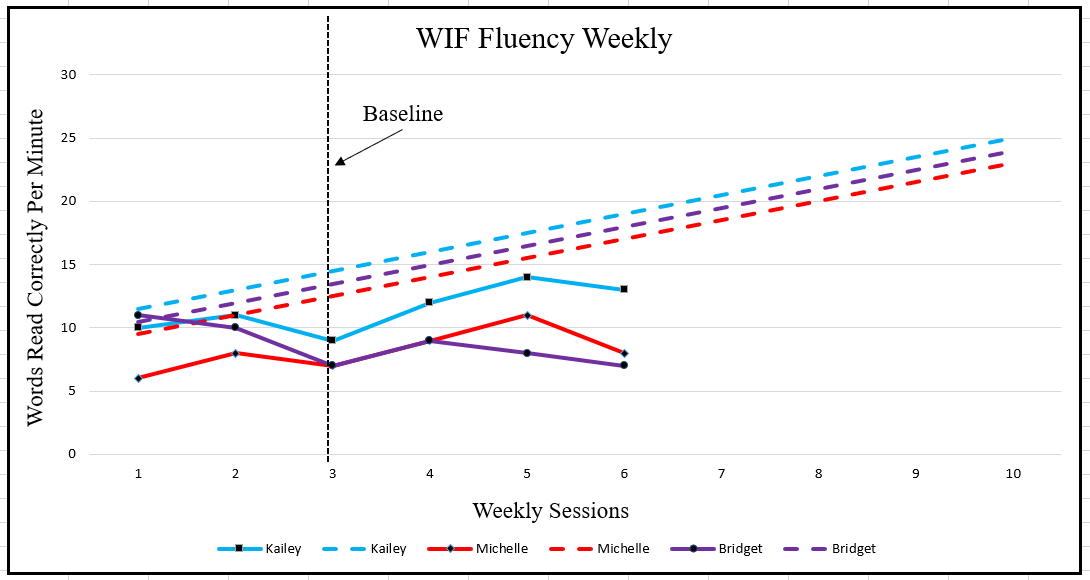Curriculum-Based Measurement Case Study Part Four

Now that Miss Erickson and Mrs. Franks have determined the rate of weekly progress and their decision rules for making instructional changes, they are now reading to implement the progress monitoring probes, graph their data and make decisions.
Let’s see how Miss Erickson and Mrs. Franks implement CBM in their co-taught class.
Please note that from this point on, the case study will only be focusing on the students who are receiving the word identification fluency probe (WIF).
Miss Erickson and Mrs. Franks have decided on a WIF (word identification fluency) probe to access their students that were reading below 10 words per minute on the second grade oral reading fluency probe.
They consult the information for their CBM pre-planning training for information about WIF probes. They find this information the most helpful in making the decision to use the WIF for their students who are reading well below grade level:
- With word identification fluency, students have 1 min to read isolated words, presented in lists; the words are selected randomly from high frequency word lists
- The number of words read correctly, represents automatic word recognition skill
- WIF can provide important information on text reading difficulties
- WIF demonstrated the strongest overall accuracy for screening early first grade students according to reading outcomes at the end of first grade
(Fuchs, Fuchs, & Compton, 2004; Clemens, Shapiro, & Thoemmes, 2011)
Examples of a Word Identification Fluency Probe – student and acessor

Now that Miss Erickson and Mrs. Franks have chosen to use the WIF probe, they are ready to implement CBM. They need some baseline data to start their CBM graph. They want to see where the students are before they make a decision about the aim line that they will use for their graph. Here is what they find:

Now that Miss Erickson and Mrs. Franks have their baseline data, they collect three more weeks of WIF data and graph it. They also add in the aim lines for the students. Remember that their rate of weekly increase is 1.5 words per minute. They add these lines to their graph to track the students progress. Here is what they see on their graph:

Now that Miss Erickson and Mrs. Franks have added the aim lines, they note that the instruction that is happening in the classroom is not increasing the student outcomes on the WIF probes. They know that they need to change the instruction to increase student performance.
Now that Miss Erickson and Mrs. Franks have graphed their data and seen that an instructional change is needed, let’s see what they do in the Case Study Conclusion.
References:
Clemens, N. H., Shapiro, E. S., & Thoemmes, F. (2011). Improving the efficacy of first grade reading screening: An investigation of word identification fluency with other early literacy indicators. School Psychology Quarterly, 26, 231–244.
Fuchs, L. S., Fuchs, D., & Compton, D. L. (2004). Monitoring early reading development in first grade: Word identification fluency versus nonsense word fluency. Exceptional Children, 71, 7–21.

